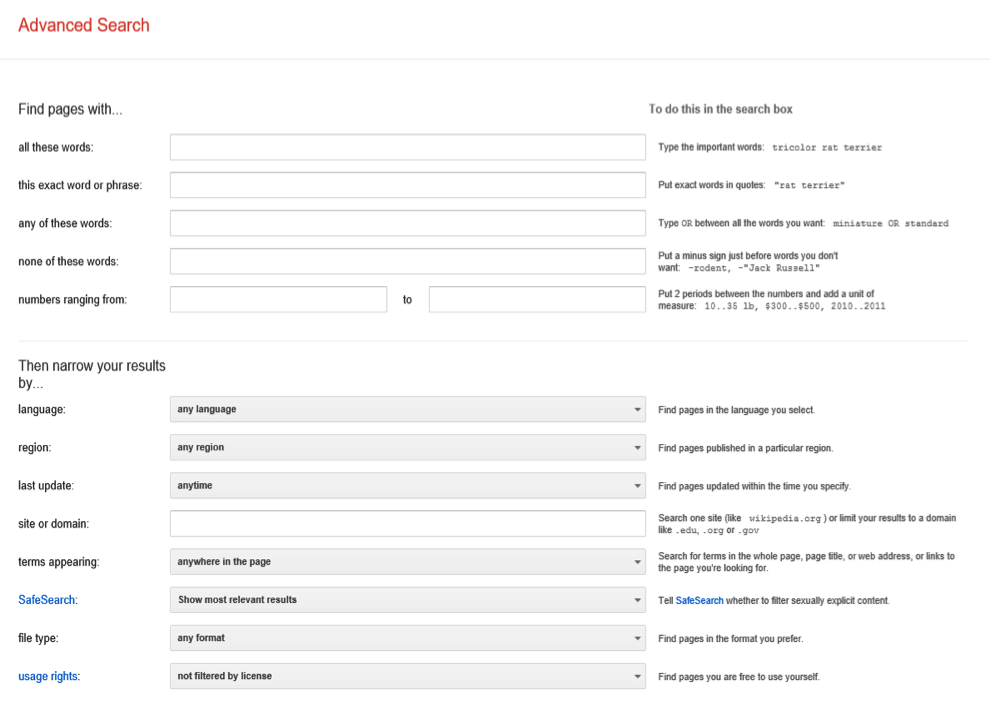Search engines are the gateway to information.
And when identifying stakeholders, information is king. The strategy and methods you use to find stakeholders are going to be critical to your success.
Using search engines for stakeholder identification
First, you need to broaden your definition of the search engine. Google, Bing, Yahoo, and Baidu are search engines dedicated to wide-reaching searches for information that is indexed by their algorithms.
A potentially far more valuable class of search engines to investigate are the internal search engines of corporations, academic institutions, industry associations, council and national government regulatory agencies, and social media channels.
This is where you’re going to find your niche stakeholders. Most of these entities have a search box on their website which links to content that may not be exposed to the "Googles" of the world.
There is also a host of smaller, lesser-known search engines that might prove valuable in your search for stakeholders. Wolfram Alpha and Duck Duck Go are two of the more interesting ones.
Wolfram Alpha approaches searching the web in an alternative manner to Google. It’s designed solely with the intention of answering questions about data and analytics.
Duck Duck Go predominantly serves as a search engine that doesn’t track and report your every move but also removes any search results that are tailored to you, so you can escape your personal bubble and find a wider variety of stakeholders.
Your search strategy is your key to success. Get it right and you’ll easily find stakeholders, but get it wrong and you could find yourself going around in circles.
You can follow these steps:
Develop a list of keywords and phrases
Using your project descriptions and objectives, identify keywords relevant to your project.
There are keyword identification tools that can help you with this, such as Google’s keyword planner, but your project documentation and a good thesaurus can be effective as well.
You need to do this well because the accuracy and effectiveness of your search results depend on it. Don’t be afraid to experiment. As search results start rolling in, you will see possible search words and phrases that didn’t occur to you in your initial analysis of the project documentation.
Identify the influential people talking about your project
Use search to identify articles and blog content that’s relevant to topics around your project or organisation.
Identify the authors and use this as a list of potential stakeholders.
Refine your search
Using information gleaned from search results, continually refine searches to identify new and more niche stakeholders.
For a more accurate search, use the sophisticated advanced search capabilities that are available on search engines. These allow you to focus the search on specific words, names, and phrases that you’ve found to be relevant to your project.
Given that Google is the primary search engine for most people, let’s look at its advanced search options:

As you can see, Google allows you to organise an advanced top-level search and then narrows that search down to some very specific choices.
This same technique can be used on any search engine, even if you have to do it manually. However, with Google, it’s a plug-and-play exercise until you find what you’re looking for.
The shortcoming of the search process lies in the initial definition of keywords and phrases. If you do it without much thought or discipline, the search results will not be relevant, and your niche stakeholders will slip through the cracks.
If you don’t learn something from each successful search event and refine your search terms and phrases, your search for niche stakeholders will fall short of its goal.
Go one step further with your stakeholder identification
After exploring search engines, consider using social media search techniques to find relevant stakeholders, content and comments.
We have a blog post that will guide you through how to do it: How To Identify Stakeholders Using Social Media.
The next steps
With stakeholders properly identified, it's time to map them and create a stakeholder engagement plan.
A stakeholder engagement system is the most effective tool to support all your engagement and management needs and put your plan into practice.
Learn more about Tractivity and how it can help you deliver better stakeholder engagement, contact us for a free demo.

